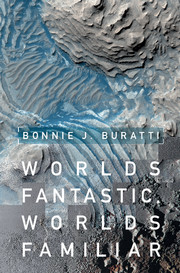Book contents
- Frontmatter
- Dedication
- Contents
- Acknowledgments
- Introduction
- 1 Mercury: The Hottest Little Place
- 2 Venus: An Even Hotter Place
- 3 Mars: The Abode of Life?
- 4 Asteroids and Comets: Sweat the Small Stuff
- 5 Galileo's Treasures: Worlds of Fire and Ice
- 6 Enceladus: An Active Iceball in Space
- 7 Titan: An Earth in Deep Freeze?
- 8 Iapetus and its Friends: The Weirdest “Planets” in the Solar System
- 9 Pluto: The First View of the “Third Zone”
- 10 Earths Above: The Search for Exoplanets and Life in the Universe
- Epilogue
- Glossary
- Index
- Plate section
9 - Pluto: The First View of the “Third Zone”
Published online by Cambridge University Press: 24 March 2017
- Frontmatter
- Dedication
- Contents
- Acknowledgments
- Introduction
- 1 Mercury: The Hottest Little Place
- 2 Venus: An Even Hotter Place
- 3 Mars: The Abode of Life?
- 4 Asteroids and Comets: Sweat the Small Stuff
- 5 Galileo's Treasures: Worlds of Fire and Ice
- 6 Enceladus: An Active Iceball in Space
- 7 Titan: An Earth in Deep Freeze?
- 8 Iapetus and its Friends: The Weirdest “Planets” in the Solar System
- 9 Pluto: The First View of the “Third Zone”
- 10 Earths Above: The Search for Exoplanets and Life in the Universe
- Epilogue
- Glossary
- Index
- Plate section
Summary
I clearly remember a conversation I had with my brother Bruce when I was six or seven in the small bedroom we shared in our home in the steel town of Bethlehem, Pennsylvania. My brother asked me how long I thought it would take to freeze to death if you were standing on Pluto and weren't wearing a spacesuit. Pluto was one of the nine major planets back then, and as the farthest out, it was the coldest thing a child could imagine. I asked Bruce if he thought Pluto was colder than Antarctica: we both thought it was. We figured if you were bundled up in a snowsuit and covered up with blankets, you might live five minutes at the South Pole. This era was pre-internet – even hand-held calculators were more than a decade away – so we couldn't look up the temperature of Pluto, or even of Antarctica. We finally decided Pluto was so cold you'd die in about five seconds. I remember the view I had of the surface of little Pluto – ice everywhere and very dark. My trusty Child's Book of the Stars had only six sentences on Pluto, and its stated size of 4,000 miles was disappointingly small, only about half the size of the Earth. But as we shall see, Pluto shrank even further before its planetary demotion.
Pluto grabbed me again in 1965, at the same time Mariner 4 sent back its images of a disappointing, cratered, moonlike Mars. Scholastic Book Services, the lifeline of curious children, offered a 45-cent book called The Search for Planet X by Tony Simon. Sputnik had been launched eight years earlier, the space race was in full swing, and everyone was looking up. The Search was pure romance, offering the improbable story of a farm boy who discovered a planet.
Clyde Tombaugh was drawn to the stars by the wide and clear skies of Kansas. He built his own telescopes, from grinding the lenses to fashioning their mounts out of old parts from farm machinery, including a cream separator.
- Type
- Chapter
- Information
- Worlds Fantastic, Worlds FamiliarA Guided Tour of the Solar System, pp. 181 - 204Publisher: Cambridge University PressPrint publication year: 2017

